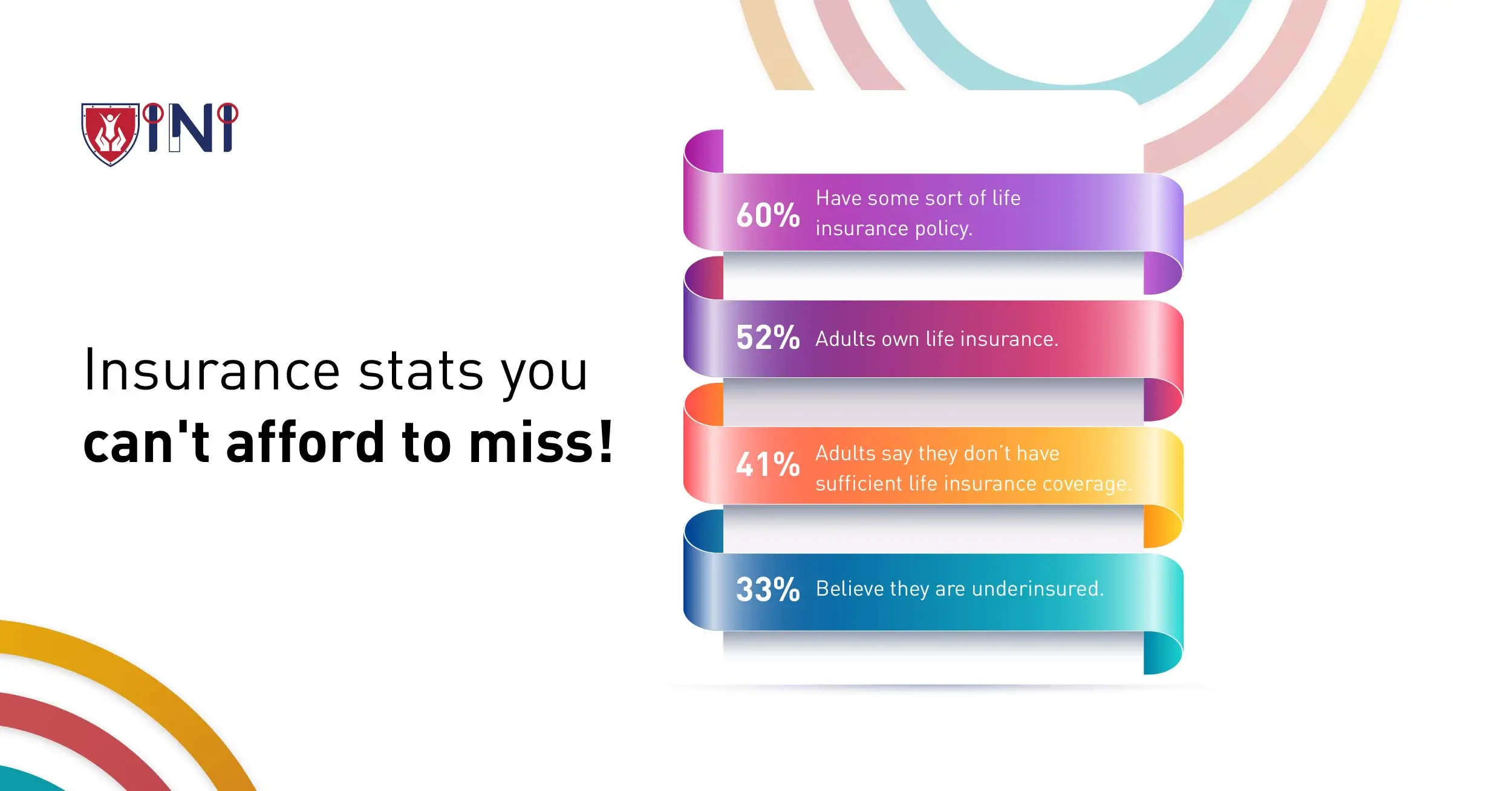How to make use of survivorship life insurance in estate planning?
Survivorship life insurance is one of the smart financial methods used in estate planning. It helps you leave a lasting legacy for your heirs. It is one of the most unique forms of life insurance you can find.
If you’re wondering how you can make use of survivorship life insurance in estate planning, keep reading the blog.
In this blog, we will highlight the features of the best whole life insurance policy and understand the process of evaluating your estate planning.
What is survivorship life insurance?
It is referred to as a second-to-die policy and it insures two people in one policy. They are the ones who are usually married and in a spousal relationship.
The death benefit is paid out only after the second insured spouse passes away. Upon the death of only one spouse, the estate taxes are passed to the surviving spouse.
Survivorship life insurance was introduced in the early 1980s followed by a change in tax law allowing a couple to defer all their estate taxes until the second spouse dies.
This type of insurance is sold by insurance companies as a whole life insurance policy and a universal life insurance policy. They come with a variety of benefits, including lower premiums, estate tax savings, and potential fund trusts.
Survivorship life insurance is more flexible and convenient compared to other types of life insurance policies.
2 Main types of survivorship life insurance
The financial security provided by this type of life insurance is unmatched and there are two types that fall under survivorship life insurance.
-
Whole life insurance
-
These policies have fixed premiums and it remains the same throughout the policy’s lifetime. This helps in long-term financial planning as you will always know your insurance costs
-
The cash value is another significant feature of whole life insurance. It is built up and accumulated as your premium is split into three categories.
-
Among these three categories, one portion of your premium goes toward death benefit, the other one goes to the insurer’s costs & profits, and the third goes to the policy’s cash value.
-
The whole life insurance policy gives guaranteed death benefits to your heirs when both policyholders pass away.
-
This can help with efficient estate planning and ensures that your loved ones get a tax-free payout to meet estate expenses and outstanding debts without financial hurdles.
-
Hence, this is considered to be one of the best long-term life insurance policies among the rest.
-
-
Universal life insurance
-
This is another type of survivorship life insurance that offers flexibility when it comes to the cash value component.
-
It lets you use the money while you’re still alive. However, these policies vary based on risks and potential upsides involved, and the amount of risk you can bear must be decided by you.
-
There is no tax implied for policyholders who borrow against the accumulated cash value. But, certain withdrawals may be taxed.
-
Policyholders have the autonomy to adjust their premiums and death benefits. One of the pro points is that there is a potential for cash value growth.
-
On the whole, survivorship life insurance provides valuable offers in terms of estate planning, legacy protection, and end-of-life planning.
Your choice between the two highly depends on your ability to tolerate risks, financial goals, and the level of flexibility you desire in your policy.

Pros and cons of survivorship life insurance policy
| Pros | Cons |
|---|---|
| 1) We would like to start with one of the main advantages of this type of life insurance policy, and that is enhanced coverage. With this type of life insurance policy, you will be able to get extra coverage than you would in a single life insurance policy. |
1) There are only a handful of cons and one such disadvantage is that the surviving partner gets no death benefit when the first partner dies. This can be a concern for many individuals as they might have to deal with immediate financial needs. |
| 2) Compared to other insurance policies, survivorship life insurance is affordable and cost-effective. This allows couples to plan and protect their children as well as their assets without financial stress. |
2) Lastly, the whole process of getting the survivorship life insurance claim can become complicated if one of the partners decides to file a divorce Deciding who gets the benefits after the relationship dissolves can be a challenging process. |
| 3) Tax benefits offered when it comes to estate planning also make this particular insurance an attractive option. The death benefit is used to cover up estate taxes and removes tax liabilities for the beneficiaries. |
|
| 4) Policyholders can use the cash value while they’re still alive to meet emergency financial needs. | |
| 5) Lastly, it also guarantees that a loved one who requires permanent care and help is looked after, once the policyholders pass away. |
Role of survivorship life insurance in estate planning
By now you would have understood the perks of getting survivorship life insurance. Here are the key roles played in estate planning:
-
After both the policyholders pass away, the policy pays out the benefits that help cover estate taxes and outstanding financial obligations.
-
This ensures that the estate’s assets and other investments of the parents are taken care of and fairly distributed.
-
The transition of wealth is smooth and swift as the policy’s death benefit is typically received tax-free. This makes it a tax-efficient way to pass on the assets to their loved ones.
-
There is no worry regarding the disputes of unequal asset distribution. Survivorship life insurance can help equalize inheritances and provide a financial upgrade to their beneficiaries.
-
It provides financial support for the ongoing needs of individuals with special needs or disabilities.
-
The death benefit can be used to ensure their care and well-being after the insured individuals are no longer there to provide support.
-
They come with lower premiums. Among all the life insurance options out there, survivorship life insurance is known for its affordability.
-
Compared to individual policies, premiums are lower and the risk to the insurance company is reduced as it only pays out after the second policyholder’s death.
3 Features of the best whole life insurance policy

This blog is an all-in-one guide and we are just about to make your decision-making process a whole lot easier.
As we talked about in the previous section, a whole life insurance policy offers a combination of life insurance coverage and cash value accumulation.
To be able to identify the best whole life insurance policy for your needs, consider these primary features.
-
The best whole life insurance policy comes with fixed and guaranteed premiums that neither increase or decrease over time. With this, you can predict and manage your long-term finances.
-
Look for policies with a competitive rate of cash value growth. The best policies offer you flexible premium payments and allow you to adjust your payment schedule.
-
See if there are tax advantages offered, as the best whole life insurance policy comes with tax benefits and tax-free death benefits. Make sure you understand and maximize these tax advantages.
Understanding the process of evaluating your estate planning
Estate planning is a critical financial strategy that ensures all your assets are distributed equally to your loved ones as per your wishes to make sure that your loved ones are protected when you’re no longer there to protect them.
Evaluating your estate planning is an essential step in the process, here’s how you need to go about it.
-
Assess your finances
Know your existing financial situation and evaluate your assets, liabilities, and the current state of your estate, if you have one.
-
Have clarity in your goals
Define your estate planning goals, and ask yourself - What do I want to achieve with my estate planning?
Some of the common goals include providing for your family, minimizing your taxes, and protecting your assets.
-
Decide beneficiaries
Determine who will take on your assets and outstanding debts. Evaluate the proportions of your assets. Your beneficiaries include children or a person who is in an interdependent relationship with you.
-
Consider special needs
If you have dependents who need special protection and assistance, include their requirements and plan for their well-being as well.
-
Review legal documents
Examine if you have any legal charges in the past or in the present by examining your will, trusts, and other legal documents to ensure they align with current goals and circumstances.
-
Evaluate tax implications
Check for any tax implications of your estate plan, especially estate taxes. To avoid complications, it is better to consult with a tax professional to find ways to minimize tax liabilities.
Final thoughts
Survivorship life insurance uplifts your estate planning and helps protect the foundations of your legacy. You ensure that your family is shielded from unexpected taxes and debt when you’re no longer there.
This particular insurance is not just for affluent families, it is for all. They have lower premium amounts compared to other life insurance policies and that makes it an affordable option for all.
If you’d like to make the most of survivorship life insurance, we suggest you consult with financial experts who can help tailor your estate planning according to your specific goals and needs. To read more about financial planning, read our blog now.
Start your estate planning here
Did you find this article helpful? Share it!







